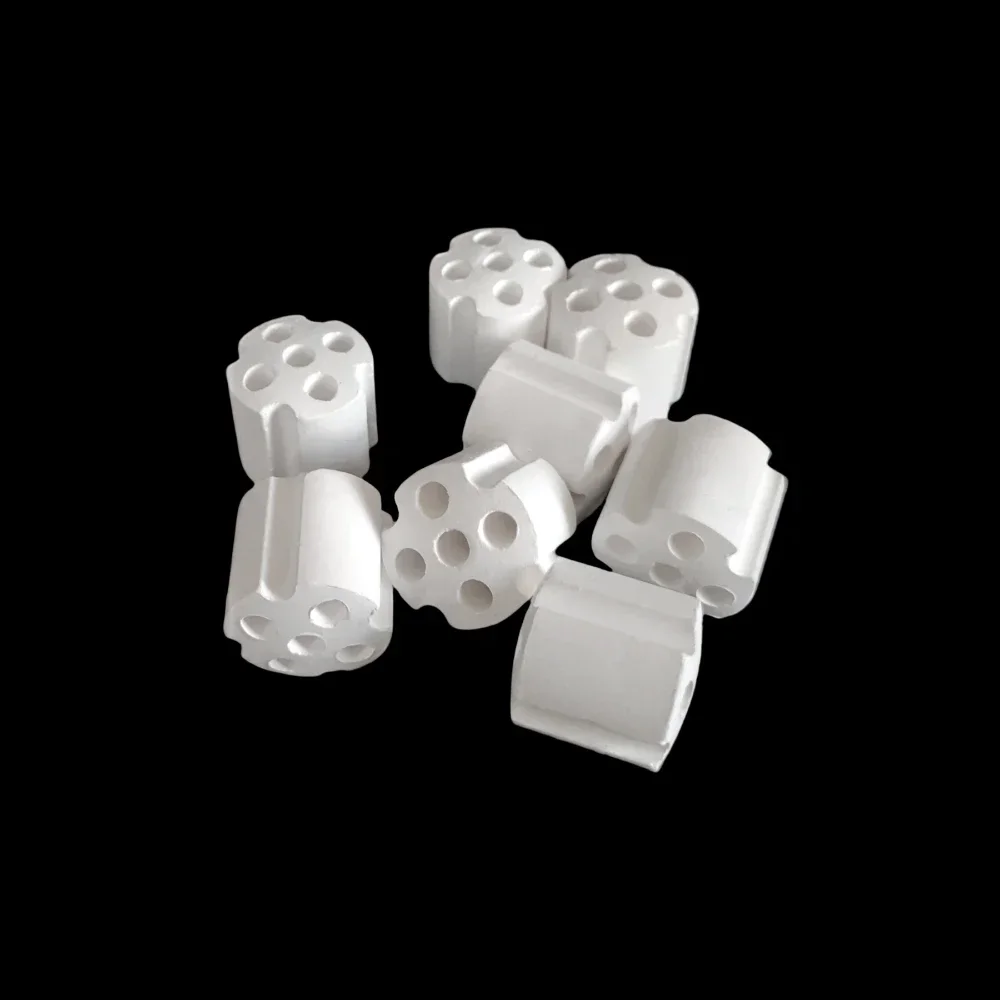Secondary steam reforming is a crucial process in various industrial applications, particularly in the production of hydrogen and synthesis gas. To optimize this process, catalysts play a vital role, and the choice of catalyst support is equally important. In this blog post, we will explore the significance of secondary steam reforming catalyst support in industrial applications, highlighting its role in enhancing efficiency, stability, and overall performance.
I. Understanding Secondary Steam Reforming
Secondary steam reforming is a chemical process that involves the conversion of hydrocarbons, such as natural gas or methane, into hydrogen and carbon monoxide. This process is typically carried out at high temperatures and in the presence of a catalyst. The catalyst facilitates the reaction by providing an alternative pathway with lower activation energy, thus increasing the reaction rate.

II. Catalyst Support: An Essential Component
In secondary steam reforming, the catalyst support material plays a crucial role in providing a stable and efficient platform for the catalyst. Catalyst support refers to a solid material that holds the active catalyst particles in place, providing a larger surface area for the reaction to occur. It also helps in distributing heat and reactants evenly throughout the catalyst bed.
An ideal catalyst support material possesses several key characteristics. Firstly, it should have a high surface area to maximize the contact between the catalyst and reactants. This increases the reaction kinetics and improves the overall efficiency of the process. Secondly, the catalyst support should have good thermal stability to withstand the high temperatures involved in the secondary steam reforming process. Additionally, it should exhibit excellent mechanical strength to prevent particle attrition and maintain the integrity of the catalyst bed.
III. Enhancing Efficiency through Catalyst Support
One of the primary roles of catalyst support in secondary steam reforming is to maximize the catalyst's surface area. A higher surface area allows for more active sites, increasing the number of catalytic reactions that can occur simultaneously. This leads to improved reaction kinetics and higher conversion rates.
Furthermore, an effective catalyst support material promotes the dispersion and accessibility of the catalyst particles. By ensuring uniform distribution, it enhances the contact between the catalyst and reactants, leading to better utilization of the active sites and increased catalytic activity.
In addition to maximizing efficiency, catalyst support materials also aid in minimizing catalyst deactivation. Effective heat and mass transfer within the catalyst bed prevent hotspots and ensure uniform temperature distribution, reducing the likelihood of catalyst sintering or fouling. This helps to maintain the catalyst's activity and prolong its lifespan.
IV. Stability and Longevity
Catalyst support materials play a crucial role in enhancing the stability and longevity of the catalyst. Sintering, the process of particle coalescence and growth, can lead to a decrease in catalyst surface area and activity. However, a well-chosen catalyst support material can minimize sintering by providing a stable structure that prevents particle migration and agglomeration.
Another challenge in secondary steam reforming is catalyst poisoning and fouling. Catalyst support materials can be tailored to minimize the deposition of impurities and contaminants that can poison the catalyst. By selecting appropriate catalyst support materials, manufacturers can mitigate the risk of catalyst deactivation and maintain the catalyst's performance over an extended period.
Moreover, catalyst support materials should exhibit good resistance to thermal and chemical degradation. This ensures the catalyst support's durability and stability, allowing for prolonged catalyst lifespan and reduced maintenance requirements.

V. Catalyst Support Materials in Secondary Steam Reforming
Various catalyst support materials are used in secondary steam reforming, each with its unique properties and advantages. Some commonly employed materials include zeolites, carbon-based materials, and metal oxides.
Zeolites are highly porous materials with a well-defined structure. They offer a large surface area and excellent thermal stability, making them suitable for secondary steam reforming applications. Zeolite-based catalyst supports provide high dispersion of active catalyst particles and improved accessibility, resulting in enhanced catalytic activity and selectivity.
Carbon-based materials, such as activated carbon or carbon nanotubes, are known for their high surface area and excellent adsorption properties. They offer good thermal stability and can be functionalized to enhance their catalytic activity. Carbon-based catalyst supports have shown promising results in secondary steam reforming, offering superior performance and selectivity.
Metal oxides, such as alumina or silica, are widely used as catalyst support materials due to their stability and compatibility with various catalysts. They provide mechanical strength and thermal stability, ensuring the catalyst's longevity and preventing sintering. Metal oxide-based catalyst supports are commonly employed in industrial secondary steam reforming processes.
VI. Tailored Catalyst Support Design
To meet the specific requirements of different industrial applications, catalyst support materials can be tailored and customized. By adjusting the properties of the catalyst support, manufacturers can optimize the performance of the catalyst and improve the overall efficiency of the secondary steam reforming process.
Synergistic effects can be achieved by combining different catalyst support materials. Hybrid catalyst supports, such as zeolite-carbon composites or metal oxide-carbon nanotube hybrids, offer unique advantages by combining the strengths of multiple materials. This approach allows for enhanced catalytic activity, stability, and selectivity.
Advanced manufacturing techniques, such as sol-gel synthesis or impregnation methods, enable precise control over the catalyst support's properties. This allows manufacturers to design catalyst supports with specific pore sizes, surface areas, and chemical compositions, further optimizing their performance for specific industrial applications.

Conclusion
Secondary steam reforming catalyst support plays a pivotal role in industrial applications, enabling efficient and stable secondary steam reforming processes. By carefully selecting and designing catalyst support materials, manufacturers can optimize reaction kinetics, improve catalyst stability, and extend catalyst lifespan. As the industry continues to evolve, ongoing research and innovation in catalyst support materials will drive further advancements in secondary steam reforming technology, leading to more sustainable and efficient industrial processes.
Yixing Winner Technology Co., Ltd. is a professional manufacturer in producing catalysts and their ceramic carriers, ceramic glove formers, and other industrial ceramics.
Welcome to inquiry if you need to know more about secondary steam reforming catalyst support details or order wholesale.

